Art History
We Ranked the 10 Best Picnic Scenes in the History of Art to Inspire Your Memorial Day Festivities
We've rated them with a highly scientific baguette emoji system.

We've rated them with a highly scientific baguette emoji system.

Katie White

As spring turns to summer, one can’t help but long for a good old-fashioned picnic. And by old-fashioned, we mean really old-fashioned—the picnic has been a perennial favorite for over 500 years.
While dining outdoors has (of course) been happening forever, the outdoor repast as an escape into nature dates back to the medieval era. Following hunting expeditions, the wealthy would enjoy outdoor feasts accompanied by heavy furniture, crystal glasses, and all manner of accoutrements carried by servants.
The meaning of the word “picnic,” too, has shifted over time. It first surfaced in 18th-century France, and originally meant something more akin to a potluck. In the 19th century, the word gained the outdoor connotations we’re familiar with today.
The idyllic outdoor repast has been a favorite subject of painters for about as long as it’s existed. Gertrude Stein, the famed Parisian art patron and poet, wrote effusively of the art of the picnic in her poem “Every Afternoon. A Dialogue” with the line: “We will picnic. Oh yes. We are very happy. Very happy. And content. And content.”
And who wouldn’t be? She likely picnicked with Picasso, Cèzanne, and a few other of her famous artist pals. (By the way, you can check out some of Stein’s partner Alice B. Toklas’s picnic recipes here.)
With Memorial Day marking the start of summer in the U.S., we decided to pull together some of art history’s most memorable picnics (and, ok, a bacchanal or two) and rank them based on fashions, food, weather, and general vibes.
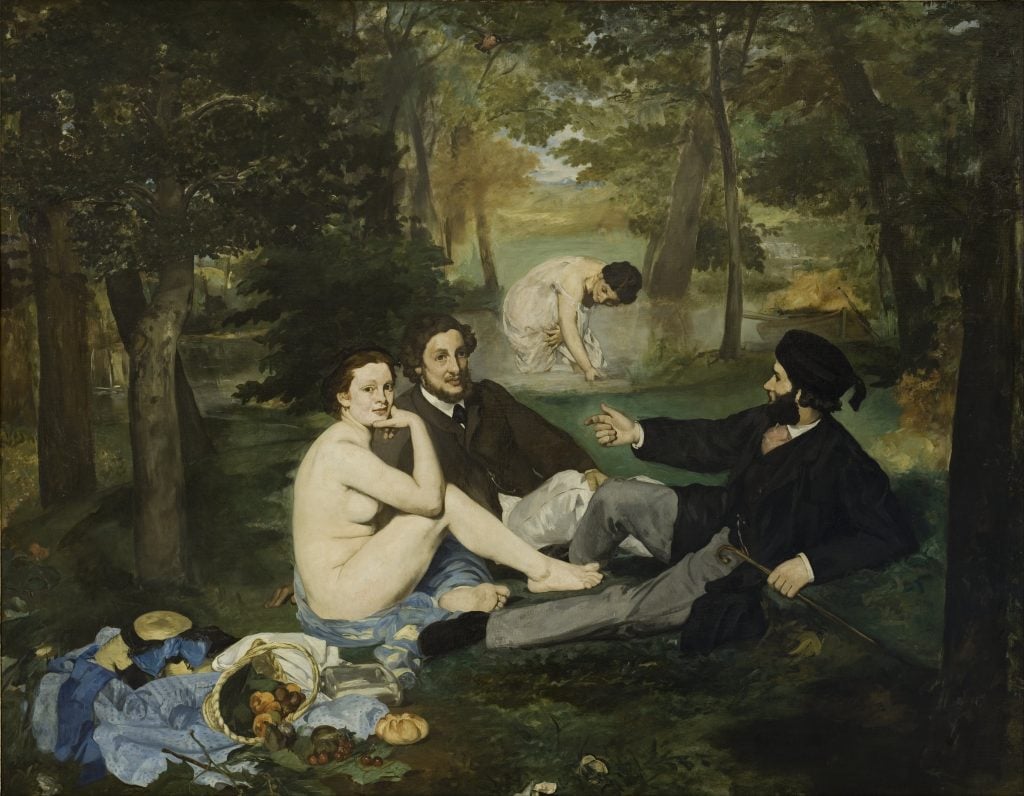
Édouard Manet, Le Déjeuner sur l’herbe (1863). Collection of the Musée d’Orsay, Paris.
Manet’s Le Déjeuner sur l’herbe (or Luncheon on the Grass) is the picnic that kickstarted Modern art. While a nude woman was not unexpected in mythological painting, her appearance at an afternoon in the park scandalized many, as did her unabashed stare. What’s more, the toppled basket of fruit had many wondering if this foursome were up to more than just dining. Our take? This is a spring picnic and no one knows what to wear: she’s hot, the men are cold, the woman in the back is cooling off—the worst kind of weather! But the picnic earns points for the idyllic wooded seclusion.
Our Picnic Appraisal: ?? It’s a little flat, don’t you think?
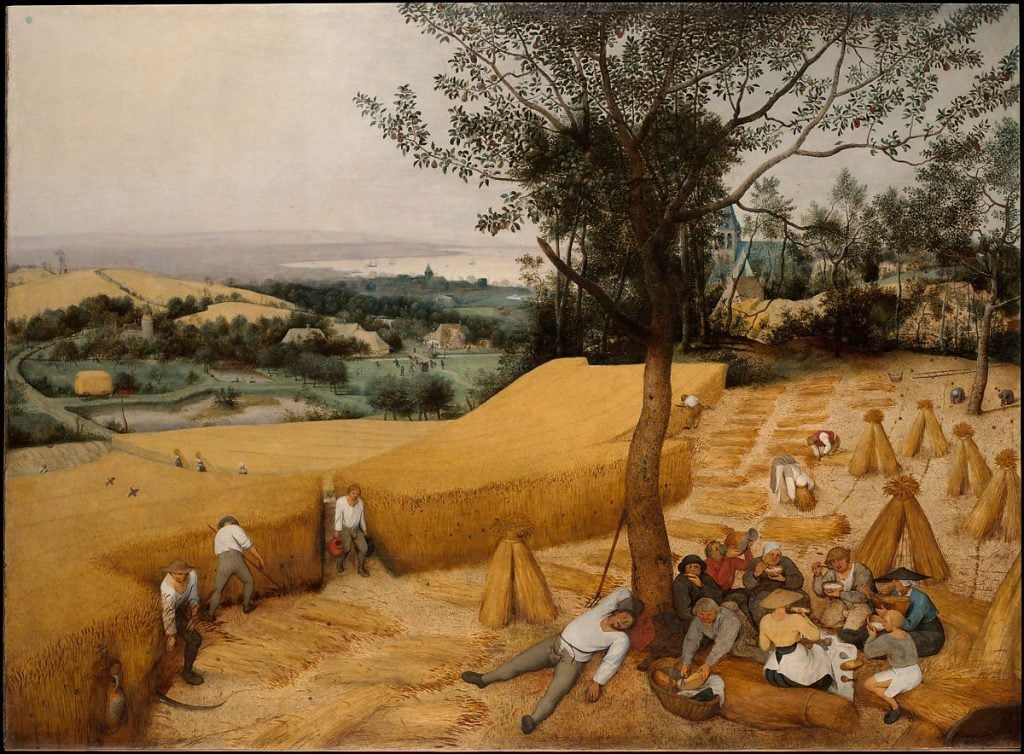
Pieter Bruegel the Elder, The Harvesters (1565). Collection of the Metropolitan Museum of Art.
Pieter Brueghel the Elder’s Harvesters is a rare glimpse of laborers enjoying a moment of respite. From our bird’s-eye view, the day looks to be a scorcher, with men and women gathered under a tree that doesn’t provide nearly enough shade. However, there are some pretty epic wide-brimmed hats being donned, and the combo of glugging directly from a pitcher and the convivial breaking of bread with coworkers does seem like it would hit the spot. Then again, is it really a picnic if half your party is laboring in the fields?
Our Picnic Appraisal: ??? Bonus points to the man taking a nap.

Henri Matisse, Luxe, Calme et Volupt (1904). Collection of the Musée d’Orsay.
Matisse offers a post-swim psychedelic picnic in the buff. Interestingly, the vivid colors Matisse employed in Luxe, Calme et Volupt historically marked the beginning of Fauvism. While we’re not sure how comfortable dining in a state of undress really is, an appealing mood of tranquility suffuses the scene. The work’s title derives from Charles Baudelaire’s Fleurs du Mal, and translates as “luxury, peace, and pleasure” which is all anyone is really looking for in a picnic, right?
Our Picnic Appraisal: ??? Loses points for being a bit spotty.
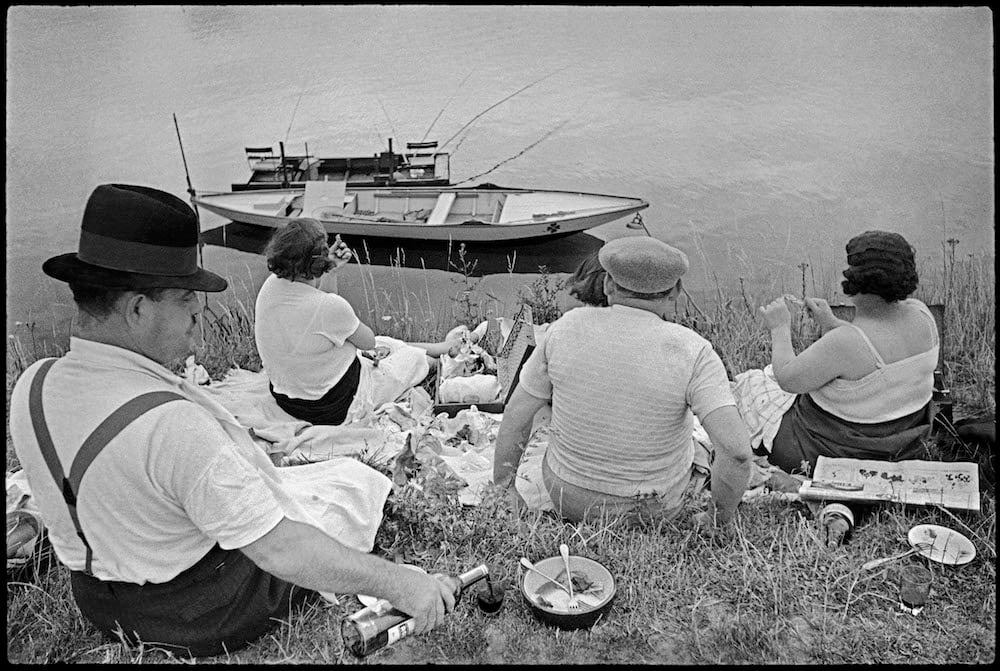
Henri Cartier-Bresson, Sunday the Banks of the Marne, Paris, (1936–38). Courtesy of Fondation Cartier-Bresson/Magnum Photos/Courtesy Peter Fetterman Gallery
Wine bottles abound along with a plethora of snacks (do we spy a chicken leg?) all set against a nice waterfront view. Guest fashions are top-notch too, with a snazzy suspender and fedora making an appearance back from when it was actually cool. Though snapped in real life, Henri Cartier-Bresson’s Sunday the Banks of the Marne, Paris looks more idyllic than a fair share of painted picnics.
Our Picnic Appraisal: ????? They brought a boat! That’s a picnic.
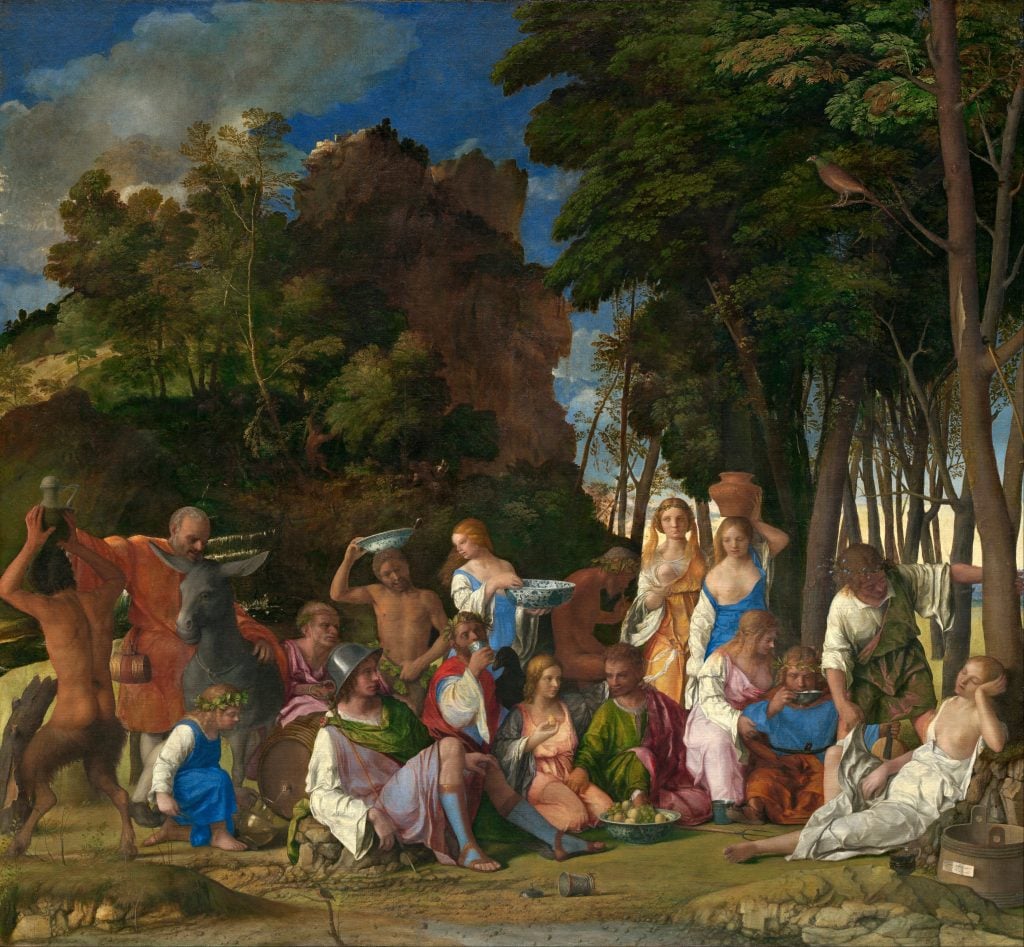
Giovanni Bellini, Feast of the Gods (1514). Collection of the National Gallery of Art.
Sure, technically, this is a bacchanal, but Giovanni Bellini and Titian’s collaborative Feast of the Gods has the uproarious, booze-heavy vibes many of us might be after following a year indoors. The painting is an illustration of Ovid’s Fasti featuring the gods Jupiter, Neptune, and Apollo. Here, we’ve got laurel wreaths, jugs of wine, and ceramic bowls of fruits. The gods will be hurting tomorrow, though: Apollo appears to have put a bowl on his head and the lady at right has entered a wine coma.
Our Picnic Appraisal: ????? Especially because of the blitzed satyr at left.
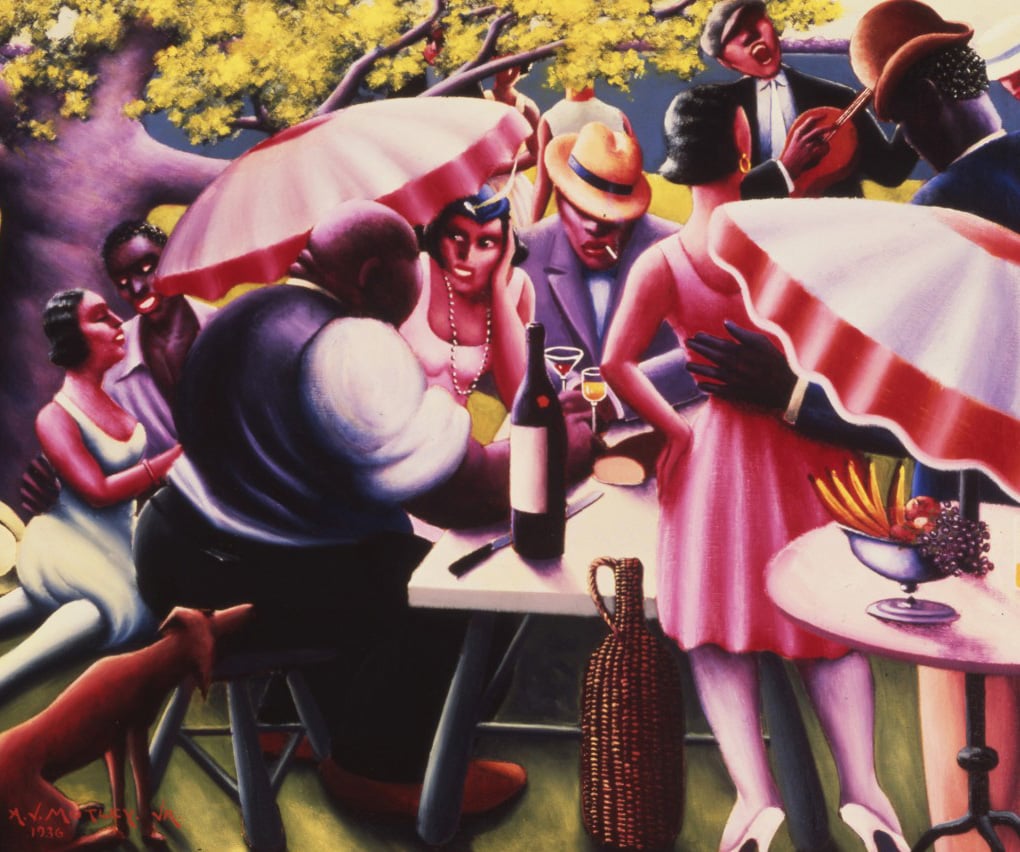
Archibald J. Motley Jr., The Picnic, 1936. Collection of the Howard University Gallery of Art, Washington, DC.
Who says picnics need to be confined to the daylight hours? Archibald Motley’s visions transform the picnic into an evening affair and one that’s quite dolled up. The introduction of a martini glass to our outdoor dining essentially earns it resounding acclaim as does the chic assortment of hats and high heels. This is a fashionable fete!
Our Picnic Appraisal: ?????????? Especially for making sure there’s music in the mix.
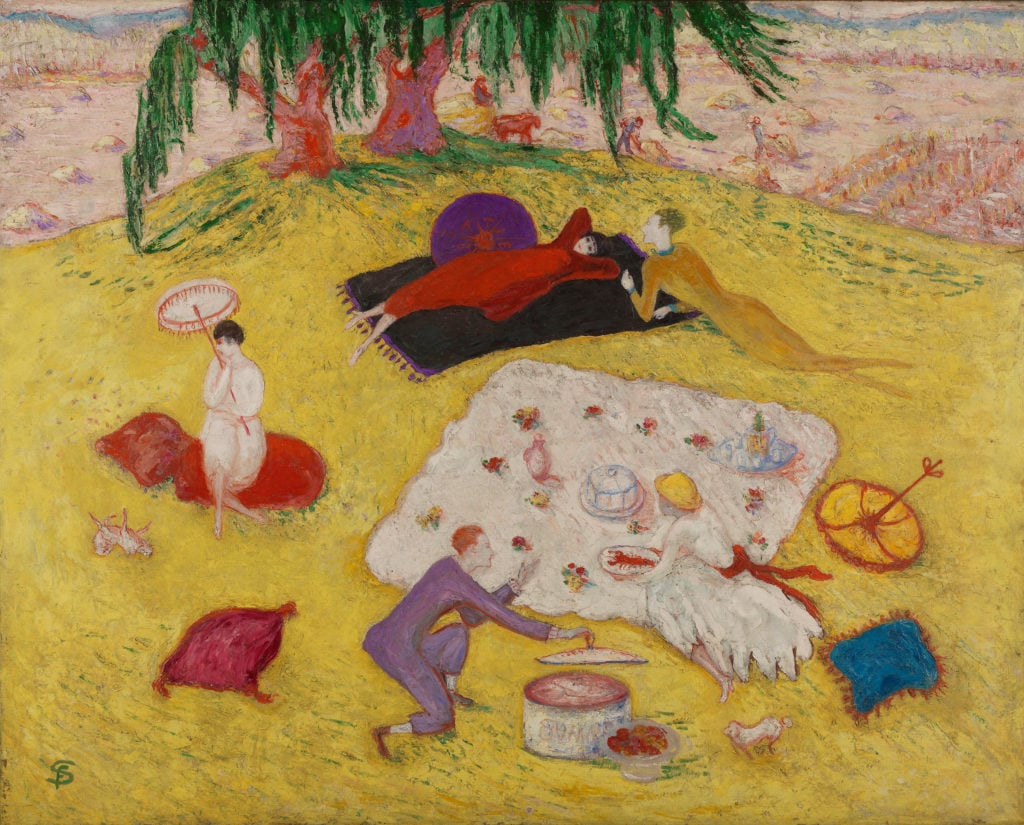
Florine Stettheimer, Picnic at Bedford Hills (1918). Courtesy of the Pennsylvania Academy of the Fine Arts, Philadelphia.
Florine Stettheimer doesn’t scrimp on the glamor: Some fancy-pants figures make an appearance in this scene, including the artist’s sisters, the sculptor Elie Nadelman, and none other than Marcel Duchamp. The group luxuriates on a yellow knoll, with a pristine white blanket with parasols, cushions, and even lobsters being served.
Our Picnic Appraisal: ? Do you see any water nearby? How fresh is the fish, really?
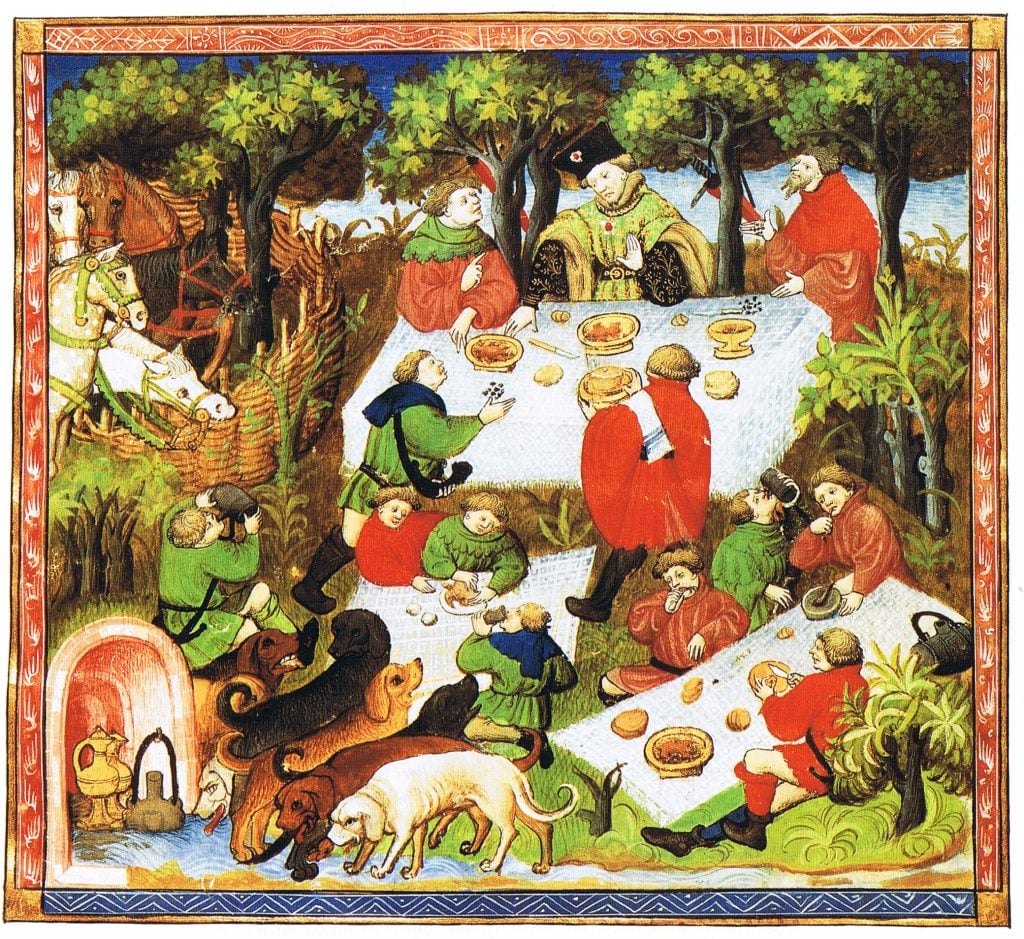
The French edition of The Hunting Book of Gaston Phebus, 15th century. Courtesy of Wikimedia Commons.
Nothing is too extravagant in The Hunting Book of Gaston Phebus, where a fair share of opulently dressed men dine at what could either be a slightly raised picnic table or blanket (15th-century perspective was a little wonky). Here people are busting into flasks of what we’re imagining to be mead. Points earned to the coordinated green and red ensembles and the numerous dogs in attendance. However, the elaborately made-up central figure at back seems to be passing on the food, which leaves us wondering about the taste.
Our Picnic Appraisal: ? The dogs also may be vomiting?
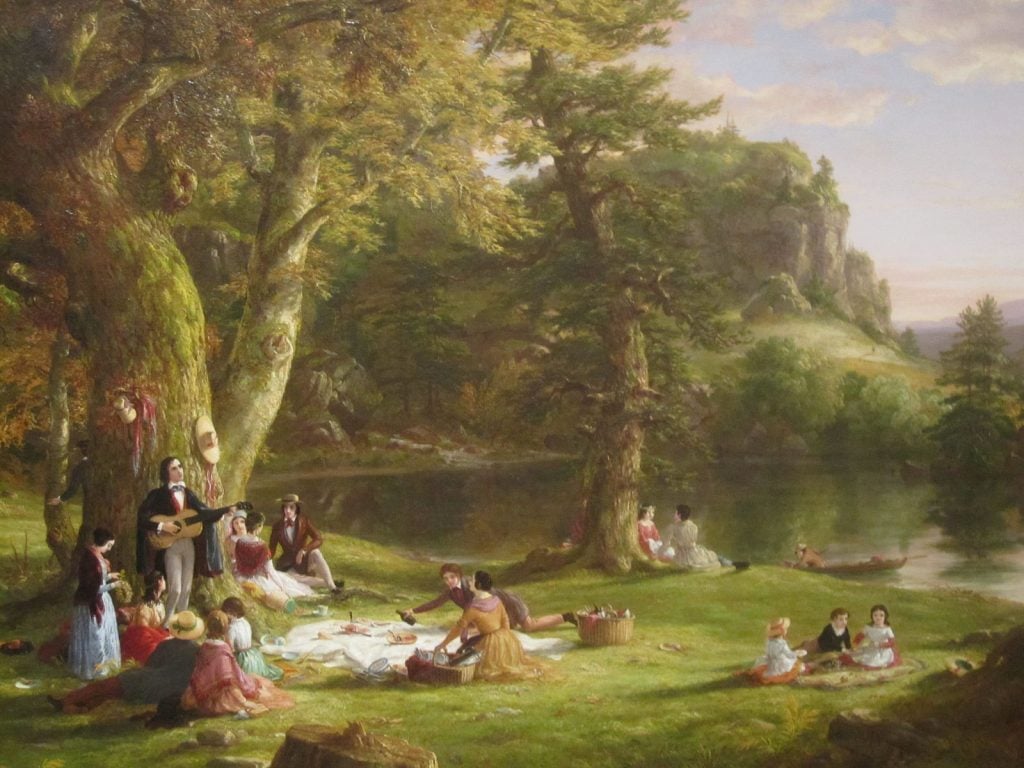
Detail of Thomas Cole’s A Pic-nic Party (1846). Collection of the Brooklyn Museum.
We’re getting some folksy vibes off Thomas Cole’s picnic scene, which is unsurprising when we remember Cole was all about living in harmony with nature as leader of the Hudson River School of painters. Here we see young people scattered in groups on a grassy lakeside area. A singer-songwriter fellow strums his guitar while donning a statement cape, as young women make and wear flower crowns, giving us 19th-century Coachella vibes. While we’re not sure how we feel about that, the presence of several picnic baskets is certainly attractive.
Our Picnic Appraisal: ???? It’s a bit kumbaya for our taste.
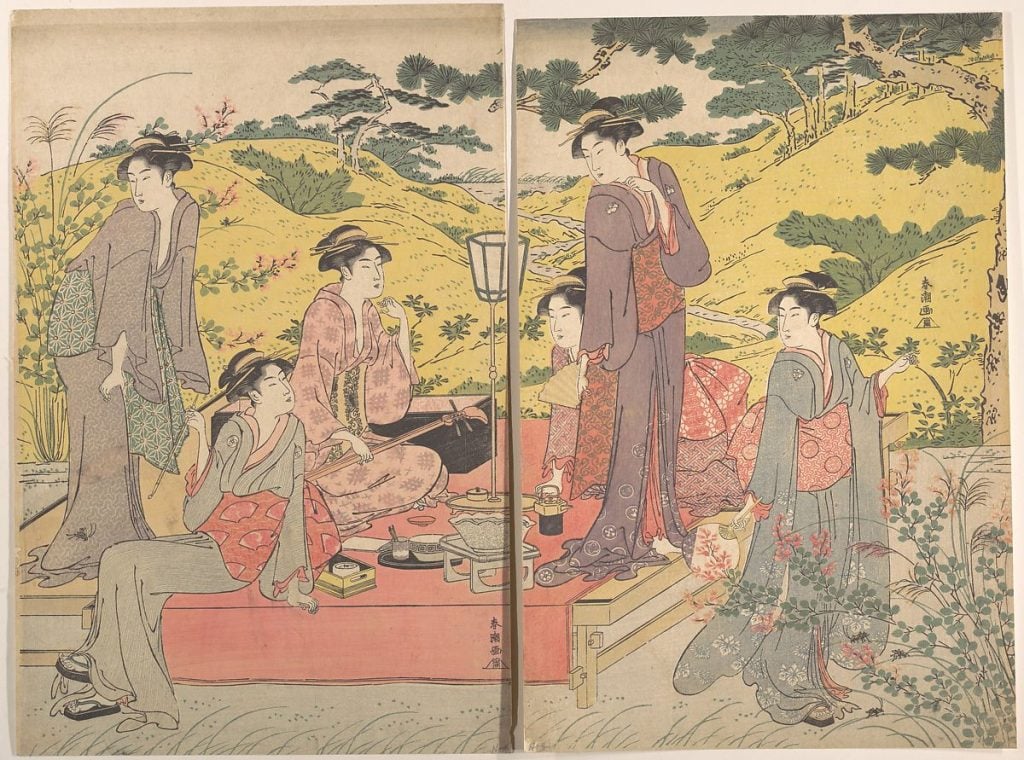
Katsukawa Shunchō, A Picnic Party at Hagidera. Collection of the Metropolitan Museum of Art.
This Edo print is the glamping of picnicking—an exquisitely dressed group of ladies are seated to dine upon a raised platform and strike all the refined poses. They’ve got musical instruments, kettles, trays of food, lanterns, and more.
Our Picnic Appraisal: ????????? Glamping is still cool, right?